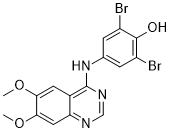Among the tract malignancies in women, ovarian cancer causes the highest rates of mortality, and diagnosis at the early stages is inadequate. No markers for ovarian cancer with high sensitivity and specificity are currently available to facilitate clinical diagnosis, staging and monitoring for therapeutic interventions. Recent  research has disclosed the presence of overexpressed HE4 in blood serum of ovarian cancer patients. Expression of human epididymis protein HE4 in ovarian cancer was initially reported in 1999, and subsequently defined as a biological marker of ovarian cancer in 2003. HE4 was originally discovered in the epithelium of the distal epididymis, and speculated to function as a protease inhibitor in the maturation of sperm. Several researchers further confirmed the utility of HE4 as a specific serum marker. Additionally, HE4 secreted by ovarian cancer cells was shown to be N-glycosylated. However, several issues, such as the glycosylation status of HE4 in human blood serum, structure, association with the occurrence, development, invasion, migration and resistance of ovarian cancer, and the underlying mechanisms, remain to be established. Glycosyl antigen, an important component of glycoproteins and glycolipids, is widely expressed in the cell membrane. Changes in the antigen are significantly associated with several biological processes, such as cell canceration, invasion, and migration. In particular, changes in glycosyl type II chain are mainly observed in ovarian cancer. Lewis y antigen, a type of glycosyl antigen, is overexpressed in more than 75% of ovarian epithelial neoplasms to some degree, and high levels are associated with poor prognosis.The tumor markers, CA-125 and MUC-1, also contain Lewis y antigen. Previous experiments by our group showed that Lewis y antigen exists not only in epidermal growth factor receptors, but also other glycoconjugates, such as integrins a5 and b1, as well as CD44. In the current study, we investigated the correlation between HE4 and Lewis y antigen with the aid of co-immunoprecipitation and double-label immunofluorescence analyses. Immunohistochemical experiments were simultaneously performed to determine the expression patterns and clinical significance of HE4 and Lewis y antigen in ovarian epithelium carcinoma tissue specimens. Our findings may provide a basis for the effective screening and treatment of ovarian cancer at the early stages. Histological section of each group of ovarian tissue was 5 mm. Each tissue had two serial sections. Expression patterns of HE4 and Lewis y in ovarian carcinoma AbMole Terbuthylazine tissues were analyzed via immunohistochemical streptavidin-peroxidase staining. Positive and negative immunohistochemistry controls were routinely employed. This novel ovarian tumor protein has been a considerable focus of research over the recent years. Gene expression profiles indicate that HE4 is one of the most frequently upregulated genes in epithelial ovarian carcinomas.
research has disclosed the presence of overexpressed HE4 in blood serum of ovarian cancer patients. Expression of human epididymis protein HE4 in ovarian cancer was initially reported in 1999, and subsequently defined as a biological marker of ovarian cancer in 2003. HE4 was originally discovered in the epithelium of the distal epididymis, and speculated to function as a protease inhibitor in the maturation of sperm. Several researchers further confirmed the utility of HE4 as a specific serum marker. Additionally, HE4 secreted by ovarian cancer cells was shown to be N-glycosylated. However, several issues, such as the glycosylation status of HE4 in human blood serum, structure, association with the occurrence, development, invasion, migration and resistance of ovarian cancer, and the underlying mechanisms, remain to be established. Glycosyl antigen, an important component of glycoproteins and glycolipids, is widely expressed in the cell membrane. Changes in the antigen are significantly associated with several biological processes, such as cell canceration, invasion, and migration. In particular, changes in glycosyl type II chain are mainly observed in ovarian cancer. Lewis y antigen, a type of glycosyl antigen, is overexpressed in more than 75% of ovarian epithelial neoplasms to some degree, and high levels are associated with poor prognosis.The tumor markers, CA-125 and MUC-1, also contain Lewis y antigen. Previous experiments by our group showed that Lewis y antigen exists not only in epidermal growth factor receptors, but also other glycoconjugates, such as integrins a5 and b1, as well as CD44. In the current study, we investigated the correlation between HE4 and Lewis y antigen with the aid of co-immunoprecipitation and double-label immunofluorescence analyses. Immunohistochemical experiments were simultaneously performed to determine the expression patterns and clinical significance of HE4 and Lewis y antigen in ovarian epithelium carcinoma tissue specimens. Our findings may provide a basis for the effective screening and treatment of ovarian cancer at the early stages. Histological section of each group of ovarian tissue was 5 mm. Each tissue had two serial sections. Expression patterns of HE4 and Lewis y in ovarian carcinoma AbMole Terbuthylazine tissues were analyzed via immunohistochemical streptavidin-peroxidase staining. Positive and negative immunohistochemistry controls were routinely employed. This novel ovarian tumor protein has been a considerable focus of research over the recent years. Gene expression profiles indicate that HE4 is one of the most frequently upregulated genes in epithelial ovarian carcinomas.